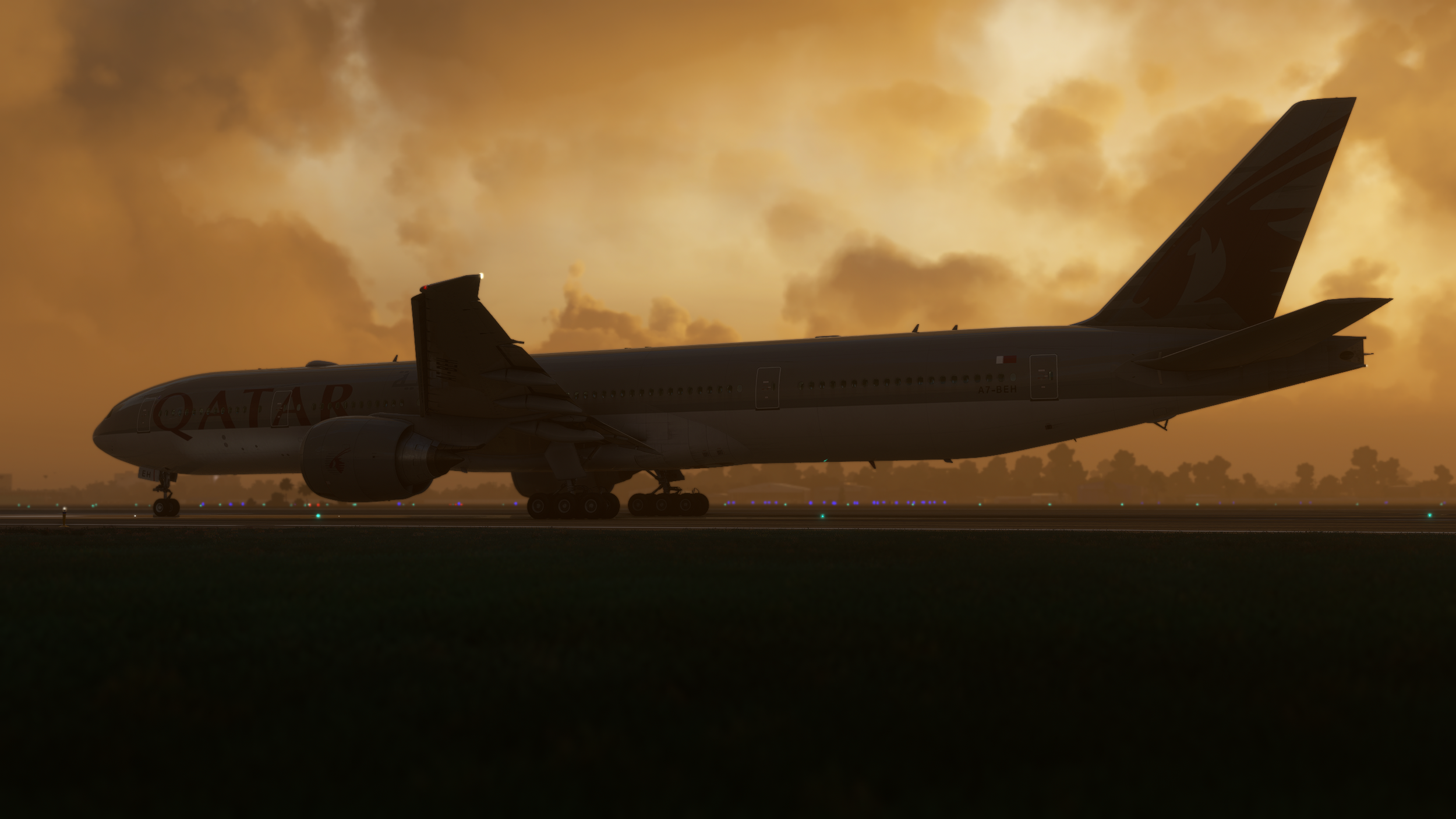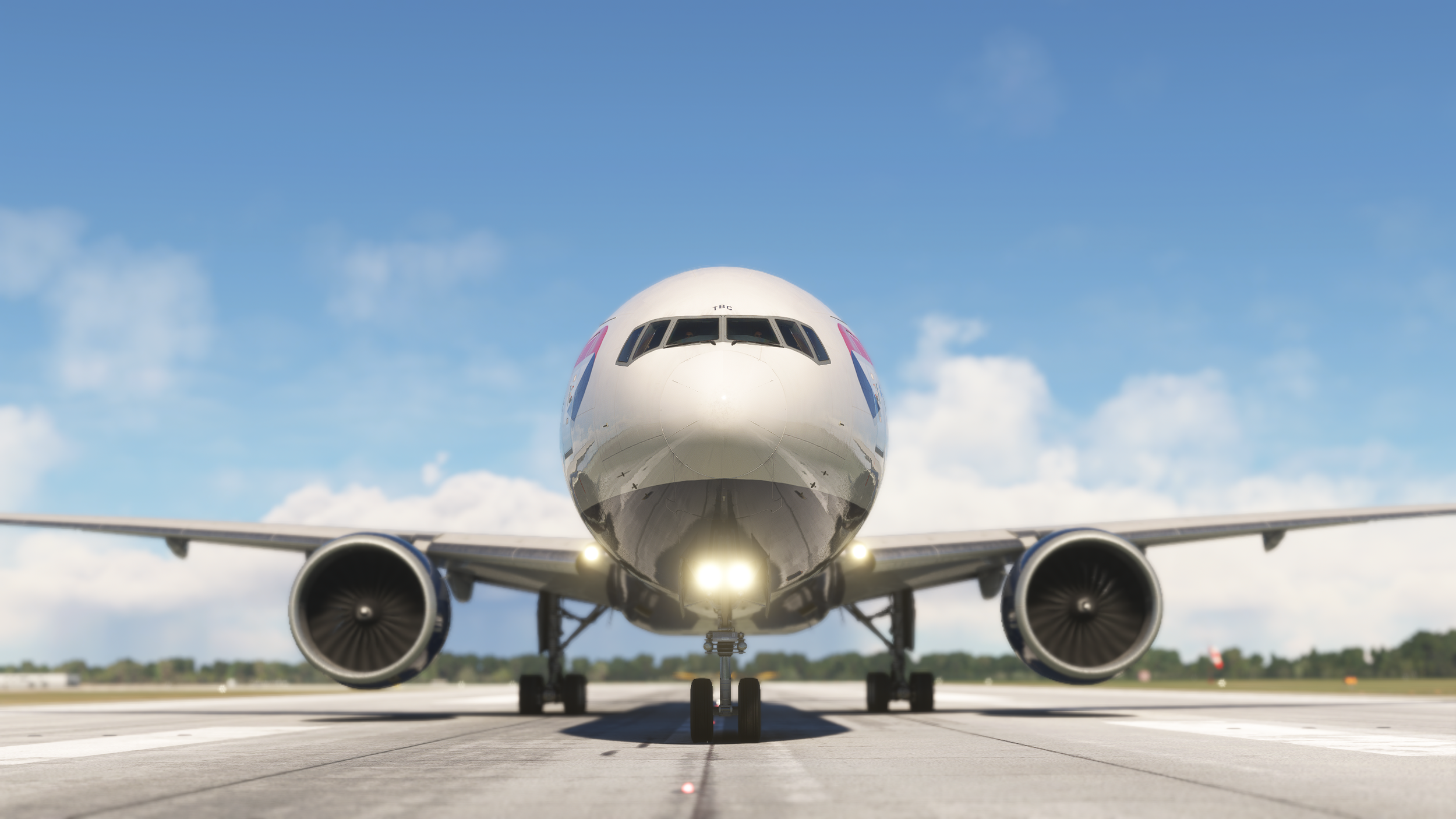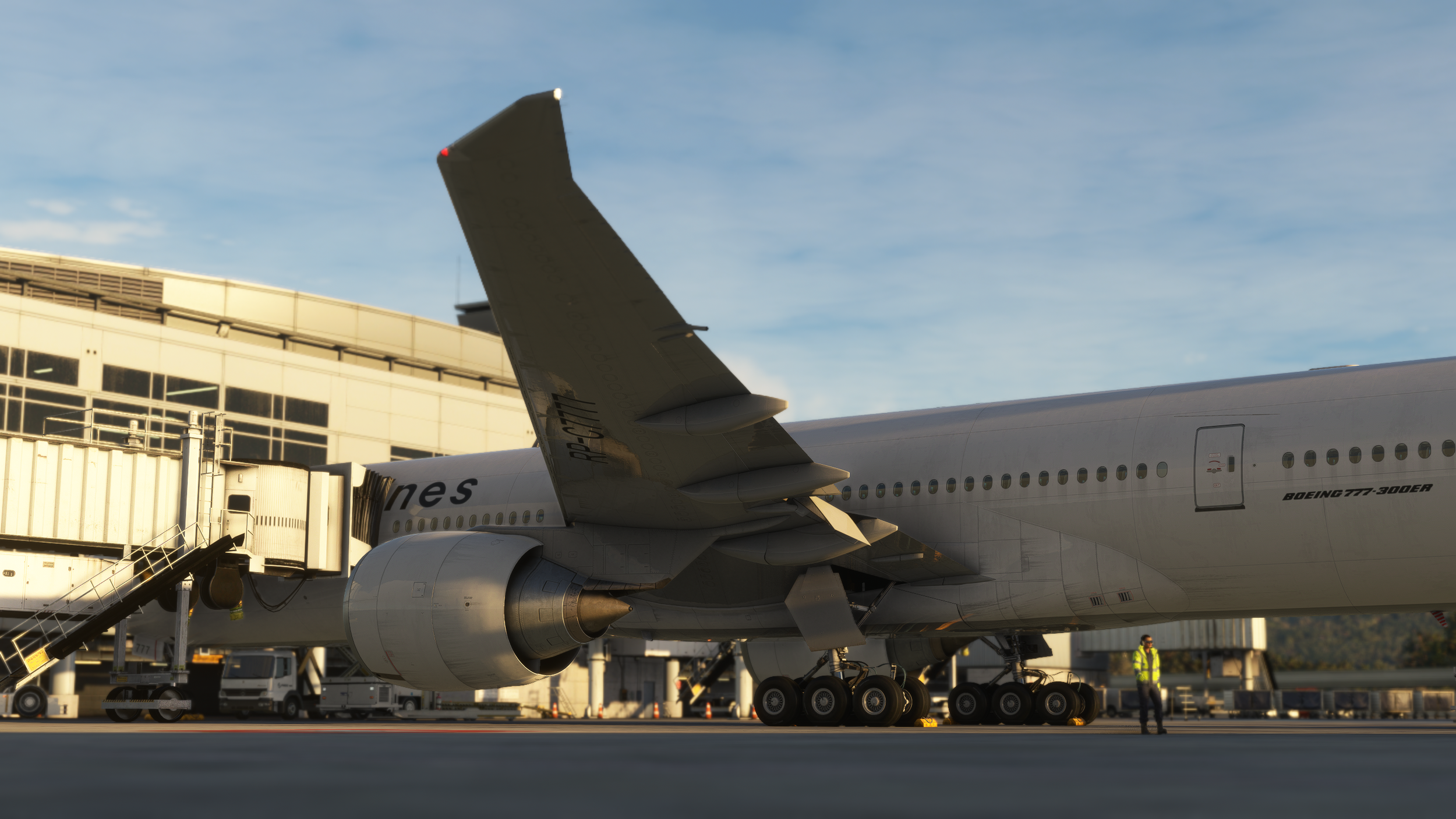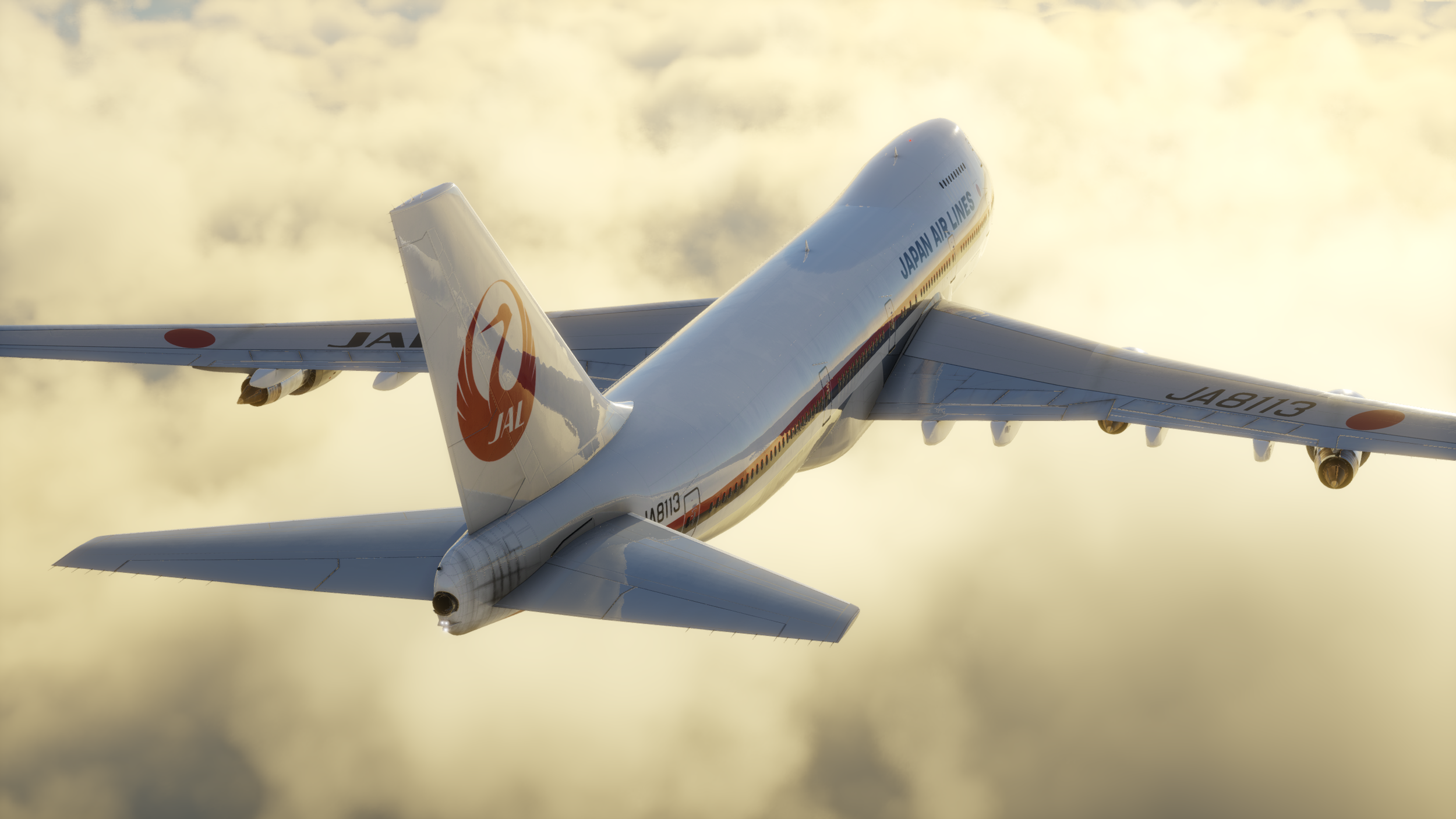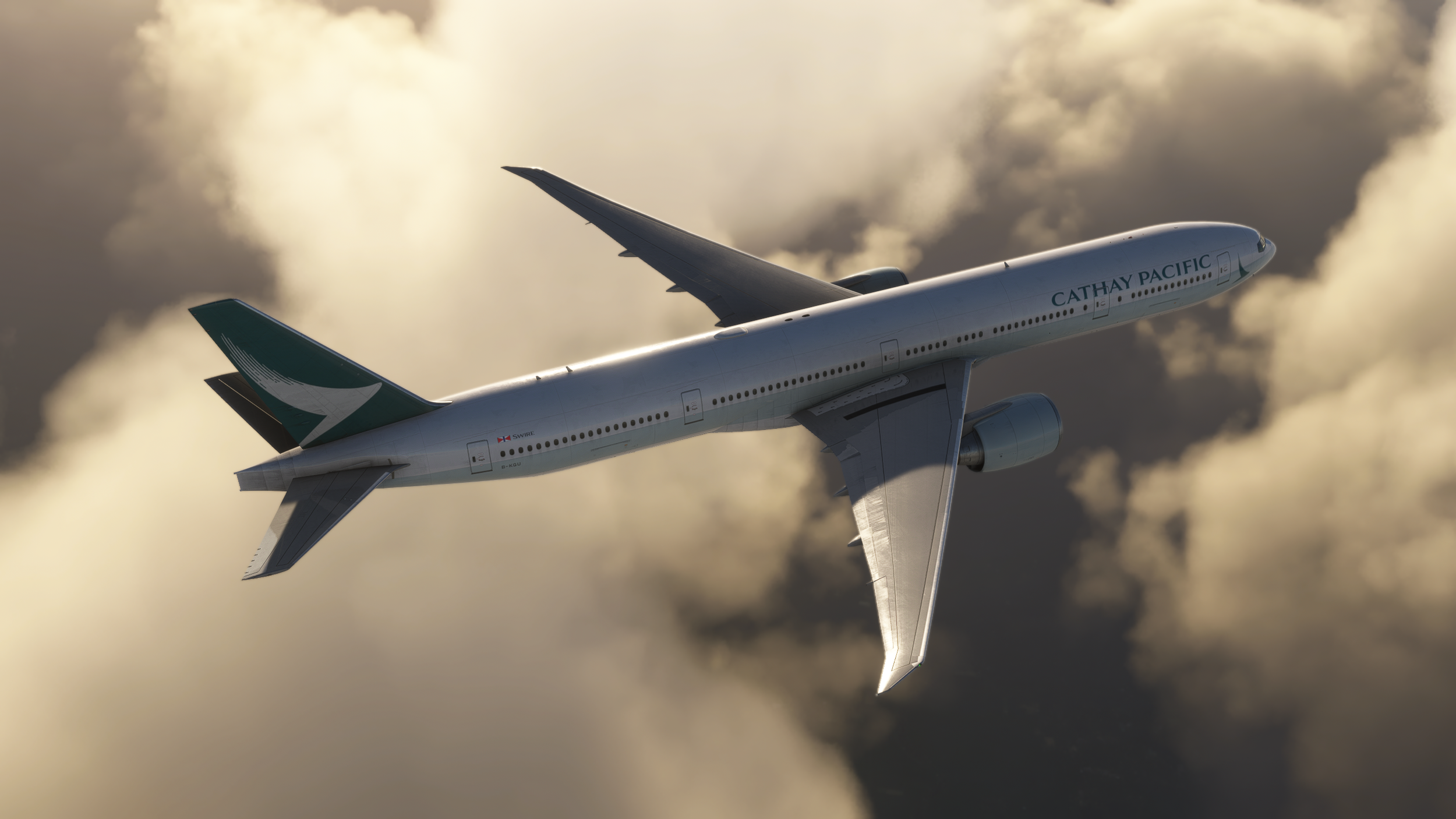SECS: A Guide to Taking Exceptional Flight Sim Screenshots
Master the Setting, Environment, Composition, and Story to get drool-worthy flight sim screenshots.
Setting
Whether your airplane is fueling up at a busy gate, mid-cruise on a transatlantic voyage, or touching down at a remote airstrip, the setting is the first step to building your scene. On the ground or in the air, there are some key aspects to consider.
On the ground
Take advantage of the scenery without letting it be a detriment. A busy gate at a custom airport can be an exciting, engaging setting, especially with airport vehicles and workers abound. If aiming for realism though, take care not to get too close to any single object. Your airplane may look amazing but a low poly fuel truck could break the immersion and have you questioning why you recently spent $1,200 on a new graphics card.
In the air
Takeoff, climb, cruise, descent, and landing all offer unique opportunities to take beautiful screenshots. Each however also offers unique risks. On takeoff and landing, consider visual fidelity of the runway, airport, and surrounding scenery. During climb and descent, ground texture and photogrammetry quality become paramount. Cruise is the opposite, where detailed ground visuals matter less from 35,000 feet, but overall intrigue can easily diminish.
For both, also consider the airplane’s configuration. Are the flaps or landing gear deployed? What about the various lights? Are you showcasing a particular livery? Would the plane think, “I am beautiful”? The way the airplane looks and presents is key to establishing its presence within the setting.
Environment
Each part of SECS is important, but if there’s one that has the most potential to dramatically uplift the scene, it’s the environment. Here we focus on sunlight, time of day, and clouds.
Sunlight and time of day
The sun’s angle and position relative to your plane will have a massive impact on the overall scene. Everything from the shine of the aircraft to the reflections on its surface, from the shadows that fall across its body to the colors of the sky above, is affected by the sunlight. As the clock progresses minute by minute the changes can be dramatic.
Airport lighting will be off one minute and on the next. Be cognizant of what you want when picking the time.
Early morning, mid day, and late afternoon and beyond will all affect the overall tone of the sky and the length of shadows across the airplane and the scene.
The sun’s location relative to the aircraft’s position will affect the plane’s reflectivity, the sheen along the fuselage and wings, and the overall glow. Positioning the aircraft, whether its direction of travel or bank angle, will also impact how it appears within a set scene. A front versus backlit scene, and the extent of each, all play a role in the overall look. The exact same plane and setting can look mind numbingly drab or positively hot depending on these factors.
Clouds
The clouds define a scene as they dance with the sunlight - a spicy tango with a worldwide audience. Play with multiple cloud layers, individually changing coverage and density, while also adjusting the sun’s position, and watch as they feed off one another. See as the sun embraces one and shies away from another, as the rays stretch their fingers and caress each smooth surface, as a tension builds between them, a moment of perfection arrives and a climax of colors bursts upon the screen.
The airplane’s location relative to the sun and the clouds will affect how well it is lit and open the door to intense scenes.
Adding cloud layers and adjusting their altitudes will have a significant impact on lighting and shadows, without any other changes.
Cloud coverage and density affect how much and how clearly the earth is visible, which can give context to altitude and overall weather conditions.
Composition
Framing, focal length, and focus. A thrilling threesome where everyone leaves satisfied assuming practice and balance (likely MMF, possibly MMM). The key is moving around, trying different positions, messing around until suddenly it all feels right.
Framing
The rule of thirds is frequently recommended for lining up your shots. And it works well. But don’t be afraid to go off grid and do something different.
The angle of your shot is an extremely powerful tool to play with. In Microsoft Flight Sim, consider using the drone cam to force a certain perspective.
As an example, if the shot were taken by “an airport worker with their cell phone,” get the camera close to the ground (but not quite ground level) and rotate up a bit. Suddenly you feel like you’re there and the ramp supervisor is asking what the fuck you’re doing.
Perhaps you’re getting a shot up high that would be difficult or impossible to capture in real life. Your options are endless, and playing with the perspective can convey, for instance, a sense of immense size and power. “Look at this big beautiful plane.”
Slight camera adjustments to improve overall contrast can also elevate the image. The position of the aircraft, for instance, relative to the buildings or clouds around it, will determine whether the plane gets lost in the scene or sticks out.
Focal length
Microsoft calls this zoom level, and it does much more than just getting you close. In other words, using zoom is not the same as translating forward. Zooming in (simulating a longer focal length) will compress the background and change the perceived shape of the plane compared to a shot simply taken with less zoom from closer up (wide angle).
Focus
There’s nothing wrong with leaving the focus on auto or fixed to infinity so everything in the scene is crisp. But focus can also be a simple way to draw your viewer’s attention, often with beautiful and downright dreamy results (“Yes I’m on a tropical island but look at my abs”). Play around with drone focus on Microsoft Flight Sim or F-number and focus distance on X-Plane 12 (where you have even more control) until you’re thoroughly satisfied. Then keep going if you can handle it.
Story
Feeling. Emotion. Narrative. What story are you telling and how should the viewer feel? Are you evoking a hint of desire, a pinch of envy, a dash of drama? Or perhaps it’s strength you’re conveying - a dominating mindset, or one of being dominated.
Unlike setting, environment, and composition, there are no hard and fast suggestions here. You might express an entire sentiment in one image, or perhaps you deliver it shot by shot, drop by drop, until you’re entirely depleted but a magic is born.
Often it’s a combination of setting, environment, and composition that lend emotion to an image. But it’s important to be intentional, to drive your narrative and own the whole of your parts.
Parting Thoughts
Setting, environment, composition, story. Pick a place, perfect the lighting, get in frame, and be emotional. SECS is a framework to help you take remarkable flight sim screenshots. Have fun with it, and eventually you’ll get that shot that really sends you over the edge.













